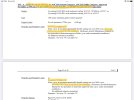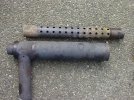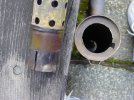crash7
Line Up and Wait
- Joined
- Nov 23, 2008
- Messages
- 667
- Display Name
Display name:
Crash7
Dumb question: The last couple flights I’ve done in our school’s 1977 PA-28-161 have had what I feel lower that usual RPM.
During a night flight at 2500 feet (warm evening, admittedly) FULL throttle barely got us 2500 rpm. Past experience I swear I should have seen closer to 2600.
Two nights ago a departure roll yielded around 2150, maybe 2200 rpm on the roll. I swear (again) usual is 2300-Osh rpm. Took 1700-1800 feet to hit 55kt rotate. Pilot aborted. Ran the book numbers and for that day/temp/weight should have been around 1,100 feet.
We’ve had some hot weather, but only putting DA’s around 2K to 2.5K.
Mechanic checked compressions, air filter, air intake/carb heat mechanism. No issues. Am I off base here? $chool want$ it to fly, of course.
And…. go
Sent from my iPhone using Tapatalk
During a night flight at 2500 feet (warm evening, admittedly) FULL throttle barely got us 2500 rpm. Past experience I swear I should have seen closer to 2600.
Two nights ago a departure roll yielded around 2150, maybe 2200 rpm on the roll. I swear (again) usual is 2300-Osh rpm. Took 1700-1800 feet to hit 55kt rotate. Pilot aborted. Ran the book numbers and for that day/temp/weight should have been around 1,100 feet.
We’ve had some hot weather, but only putting DA’s around 2K to 2.5K.
Mechanic checked compressions, air filter, air intake/carb heat mechanism. No issues. Am I off base here? $chool want$ it to fly, of course.
And…. go
Sent from my iPhone using Tapatalk





